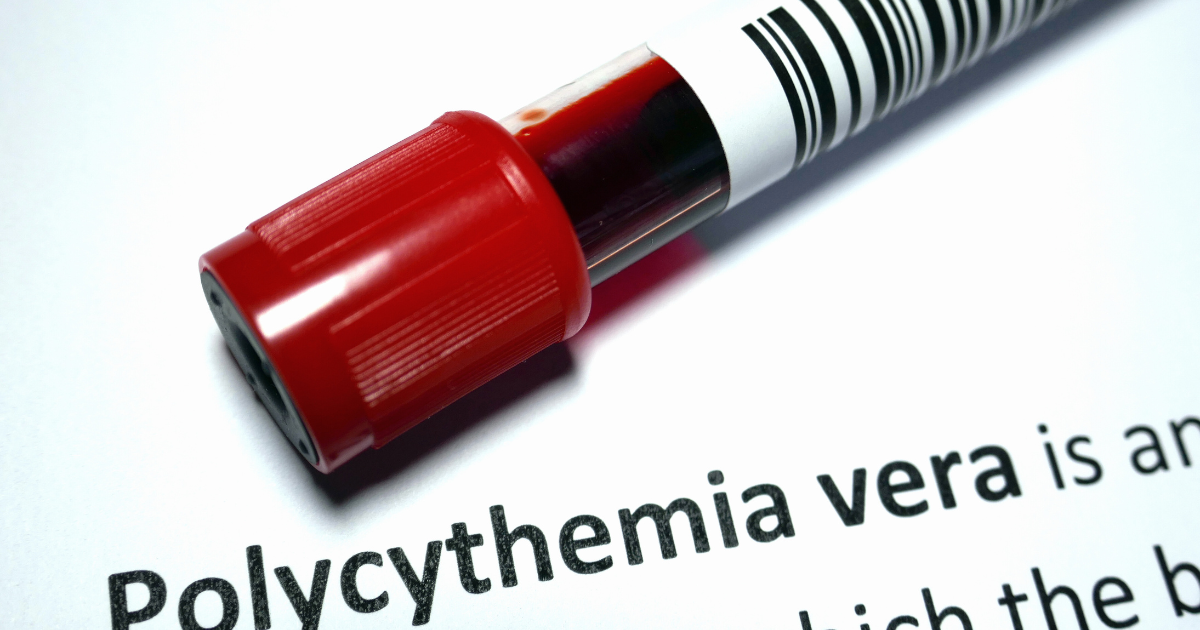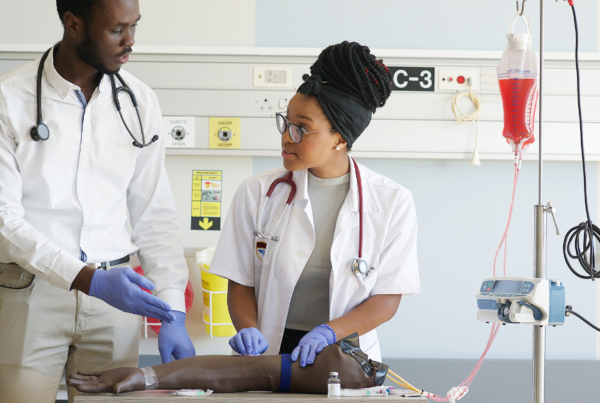Polycythemia Vera is a rare, chronic blood disorder that can have serious consequences if left untreated. It occurs when the bone marrow produces too many red blood cells, thickening the blood and slowing its flow. This can lead to life-threatening complications such as blood clots, strokes, or heart attacks. Polycythemia vera is a slow-progressing condition. It is often found by chance during routine blood tests for other reasons. Despite its serious nature, with proper medical management, those affected can lead healthier lives.
This guide provides a comprehensive look at Polycythemia Vera, addressing the symptoms, causes, risk factors, and complications. With the right knowledge and awareness, early diagnosis and timely intervention can significantly improve outcomes.
| Key Takeaways |
| Polycythemia Vera is a rare blood cancer that leads to an overproduction of red blood cells, thickening the blood and increasing the risk of blood clots. |
| The condition can go unnoticed for years due to its slow progression and absence of early symptoms. |
| Symptoms may include headaches, dizziness, fatigue, itching, and shortness of breath. |
| Polycythemia Vera is due to a genetic mutation in the JAK2 gene. The cause of the mutation is unknown. |
| Complications can include blood clots, an enlarged spleen, peptic ulcers, gout, and progression to more severe blood disorders. |
| Treatment focuses on symptom management through phlebotomy, medications, and lifestyle changes. |
What is Polycythemia Vera?
Polycythemia vera (PV) is classified as a blood cancer, a part of a group of conditions called myeloproliferative neoplasms (MPNs). The hallmark of PV is the overproduction of red blood cells, but it can also involve elevated levels of white blood cells and platelets. This increase thickens the blood, affecting its ability to flow smoothly through the body.
For those newly diagnosed, the term “blood cancer” can be alarming, but it’s important to remember that PV progresses slowly. Many individuals live with the condition for years before symptoms become noticeable, and with advancements in treatment, management options are better than ever.
Symptoms of Polycythemia Vera
One of the complexities of Polycythemia Vera is that it often presents without clear symptoms in its early stages. This can delay diagnosis and treatment. However, as the condition advances, some more specific signs emerge. Here are the most common symptoms:
- Headaches
- Dizziness
- Fatigue
- Blurred vision
- Itching (pruritus), particularly after a warm shower or bath
- Numbness, tingling, or burning sensation in hands, feet, arms, or legs
- Bloating or discomfort in the upper left abdomen due to an enlarged spleen
- Unusual bleeding such as nosebleeds or gum bleeding
- Joint swelling and pain, commonly in the big toe
- Shortness of breath, especially when lying down
If you or someone you know is experiencing these symptoms, particularly in combination, it’s essential to seek medical evaluation. Early diagnosis enables quick treatment and reduces the likelihood of problems.
When to See a Doctor
Because Polycythemia Vera can be asymptomatic for long periods, routine blood tests play a critical role in identifying the condition. However, if you notice any of the symptoms listed above or experience unexplained health issues, don’t hesitate to contact a healthcare provider. Catching PV early can prevent dangerous complications like blood clots, strokes, or heart attacks.
Causes of Polycythemia Vera
Polycythemia Vera is caused by a mutation in the JAK2 gene, which regulates blood cell production. This mutation leads to uncontrolled production of red blood cells, and sometimes white blood cells and platelets. The exact source of the JAK2 mutation is unknown. It is not often inherited from family members.
Risk Factors for Polycythemia Vera
Though Polycythemia Vera can occur in individuals of any age, certain factors increase the likelihood of developing the condition:
- Age: PV is more commonly diagnosed in individuals between the ages of 50 and 75.
- Gender: Men are more likely to be diagnosed with PV, though women may develop the condition at a younger age.
- Family history: While PV itself isn’t inherited, genetic predispositions may play a role in the mutation’s development.
Complications of Polycythemia Vera
Without proper management, Polycythemia Vera can lead to several severe complications, including:
- Blood Clots
One of the most dangerous complications of PV is the increased risk of blood clots. Thickened blood and slow circulation can lead to clot formation, which can block blood vessels and cause serious events like strokes, heart attacks, or deep vein thrombosis (DVT). - Enlarged Spleen (Splenomegaly)
The spleen is responsible for filtering blood and fighting infections. When overworked due to the increased production of blood cells, the spleen can enlarge, causing discomfort or pain in the upper left abdomen. - Peptic Ulcers and Gout
Higher levels of red blood cells and platelets can also contribute to inflammation in the stomach lining and joints, leading to peptic ulcers and gout. These disorders can cause severe discomfort and necessitate medical attention. - Other Blood Disorders
In rare cases, PV can progress to more serious blood conditions such as:- Myelofibrosis: A disorder where scar tissue replaces the bone marrow. It disrupts blood cell production.
- Acute Leukemia: A fast-growing cancer of the bone marrow and blood.
- MDS (Myelodysplastic Syndromes): A group of disorders caused by poorly functioning bone marrow.
Diagnosis and Treatment
Diagnosing Polycythemia Vera typically involves blood tests that measure the number of red blood cells, white blood cells, and platelets. If PV is suspected, doctors may run more tests. These include a bone marrow biopsy and a JAK2 mutation test.
Though there is no cure for Polycythemia Vera, treatment focuses on managing symptoms and reducing the risk of complications. Common treatment strategies include:
- Phlebotomy: A process that involves drawing blood on a regular basis to reduce the quantity of red blood cells, hence lowering blood viscosity.
- Medications: Drugs like hydroxyurea or interferon may be prescribed to suppress bone marrow activity and decrease red blood cell production.
- Low-dose aspirin: Low-dose aspirin is often advised to lower the risk of blood clots.
- Lifestyle changes: Staying active, eating a balanced diet, and avoiding tobacco use can help mitigate the risks associated with PV.
Living with Polycythemia Vera
With proper management, many people with Polycythemia Vera can live relatively normal lives. Regular monitoring and medical check-ups are essential to track blood counts and prevent complications. Staying informed and adhering to your treatment plan are crucial for managing this condition long-term.
Frequently Asked Questions
What is Polycythemia Vera?
Polycythemia Vera is a rare blood cancer in which the bone marrow produces too many red blood cells, leading to thickened blood and an increased risk of blood clots and other complications.
What causes Polycythemia Vera?
Polycythemia Vera is due to a mutation in the JAK2 gene. It causes too many red blood cells. The cause of this genetic mutation is unknown. It is not usually inherited.
What are the symptoms of Polycythemia Vera?
Symptoms include headaches, dizziness, fatigue, itching (especially after warm baths), numbness or tingling in the limbs, shortness of breath, and discomfort in the upper left abdomen due to an enlarged spleen.
How is Polycythemia Vera treated?
Treatment focuses on reducing the thickness of the blood and preventing complications. Phlebotomy (blood removal), medications that prevent the production of new blood cells, and low-dose aspirin to reduce the risk of clotting can all help achieve this.
Can Polycythemia Vera be cured?
There is no cure for Polycythemia Vera, but with proper management and medical care, individuals can live longer and manage symptoms effectively.
Who is most at risk for Polycythemia Vera?
The illness most often affects those aged 50 to 75. Men are more likely to be diagnosed. However, women may develop the disease at a younger age.
By raising awareness and improving education on conditions like Polycythemia Vera, Phlebotomy Now School aims to equip future healthcare workers with the knowledge they need to offer the best care possible to their patients.
Ready to take your phlebotomy skills to the next level?
Enroll at Phlebotomy Now School and gain the knowledge you need to excel in healthcare. Learn to diagnose and manage blood disorders like Polycythemia Vera with confidence.
Sign up today at Phlebotomy Now School and start your career in phlebotomy!







